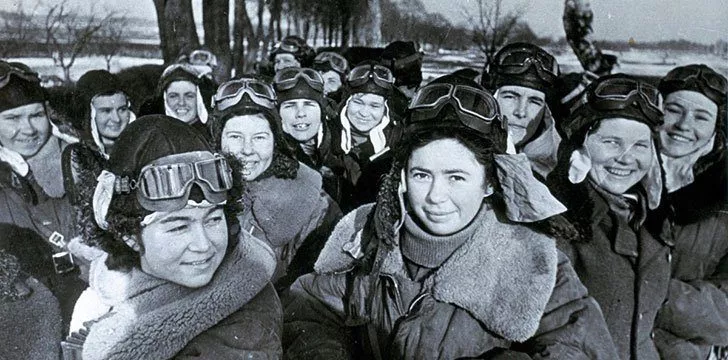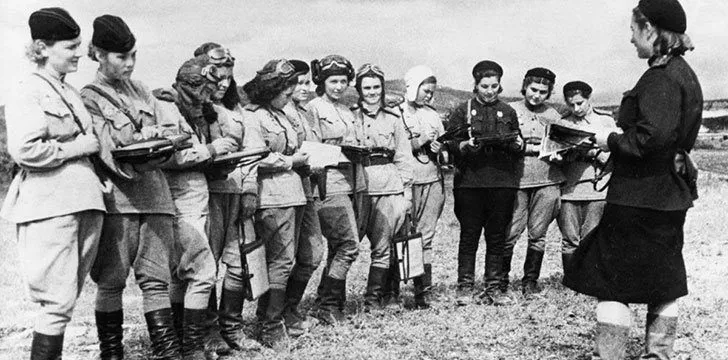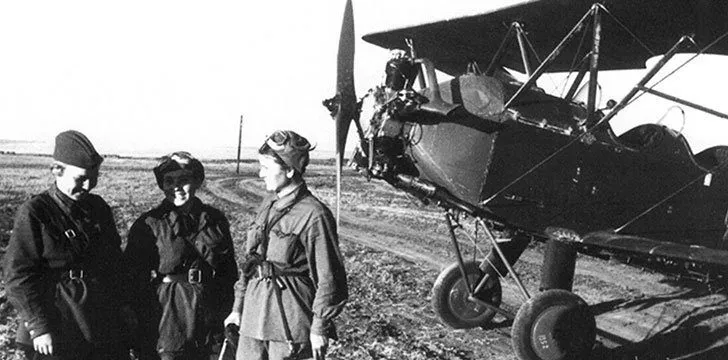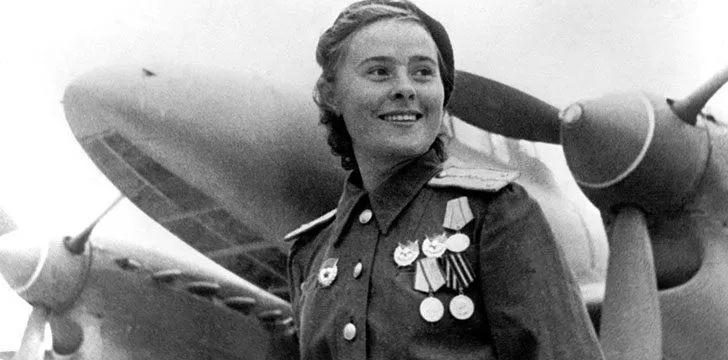On June 22, 1941, Nazi Germany launched Operation Barbarossa and invaded Russia with 3.8 million troops.
Fighting their way almost to Moscow, the Panzer Corps of the Third Reich swept through swathes of Soviet homeland.
However, winter set in and froze the Nazi forces in their tracks. Literally.
Like, the oil froze within the Nazi tanks and then their tracks froze into the ice.
This literal freeze on the situation gave the Soviet Army time to reorganize.
With spring came a push back from the Red Army which would carry on all the way to Berlin.
During their military regrouping and reorganization in 1941, the Soviet Armed Forces mobilized 800,000 women.
Many of whom, fought on the front lines.
Women In The Soviet Armed Forces

As a response to the tremendously high casualties suffered by male soldiers, Stalin allowed planning to replace men with women in second-line defense roles, like anti-aircraft gunners and medics.
In the Red Army, the most common deployment for women was as medics, communication personnel, and political officers.
There were many women who served in combat roles, such as machine gunners and tank drivers.
One lady in particular, named Tatyana Kostyrina commanded an infantry battalion and claimed 120 kills to her name.
However, the most common combat deployment for women was as snipers.
Between 1941 and 1945, just under 2,500 female snipers were active in the Red Army’s various theaters.
The different snipers were credited with over 11,000 kills, although only 500 survived the war.
In the Red Air Force, a famous female aviator called Marina Raskova, the “Russian Amelia Earhart,” used her personal connections with Stalin to establish three regiments for female pilots.
However, only one regiment remained all-female, the 588th Night Bomber Regiment.
Not only were all the pilots female, but so were the ground staff and support staff too.
They decorated their planes with flowers, used their navigation pencils as lipstick, and sewed underwear out of silk parachutes taken from flares.
On top of it all, they never bent to any of the criticism faced from men within the Red Army’s leadership.
They feminine and they were ferocious.
This regiment would go on to be known as the “Night Witches.”
The 588th Night Bomber Regiment

The 588th Night Bomber Regiment consisted of 40 two-person crews when it was at its largest.
It the most highly decorated female unit in the Soviet Air Force.
By the end of hostilities, most pilots had flown over 800 missions – with one member flying 1,008 sorties.
From 1942 until the war’s end, the Regiment flew over 23,000 sorties in total.
They carried out harassment bombing and precision bombing missions against the German military.
In total, they dropped over 3,000 tons of bombs and 26,000 incendiary shells.
The unit flew in old wood-and-canvas Polikarpov U-2 biplanes that were designed and manufactured in 1928 as training aircraft.
However, the Polikarpov had a distinct advantage that came from it’s obsoletion.
The bi-plane’s top speed was lower than the stall speed of both the German Messerschmitt Bf 109 and Focke-Wulf Fw 190.
They were able to nimbly weave through large enemy formations with ease, and the German pilots found them very difficult to shoot down.
Well, not counting Luftwaffe ace pilot Josef Kociok who grounded the entire regiment when he shout down four in one night in 1943.
By the time the war ended, 32 members of the 588th Night Bomber Regiment had been killed in action, and 23 had been awarded the Hero of the Soviet Union title.
The Night Witches

Not long after they entered action on the front lines, the Germans soon started to fear the regiment and gave them a nickname which would go on to become their informal regiment nickname: the Night Witches.
Each pilot within the Night Witches was highly skilled.
When attacking, they would cut their engines when approaching the target and simply glide towards it at low altitude before releasing their ordinance.
This attack technique meant that the only way to pinpoint the planes in the black night skies was to listen out for the wind whistling through their canvas wings.
The German soldiers said the incoming sound of the bombers was like the sound of broomsticks and named them “Nachthexen” or “Night Witches.”
It didn’t take long before every German on the Eastern front knew about and feared the Nachthexen.
Any German pilot who downed a Night Witch was automatically awarded the Iron Cross.
The Night Witches harassed many German units during the Red Army’s continued push out of its once-besieged homeland.
After the war, the 588th Night Bomber Regiment was disbanded.
Some of the members returning to civilian life, and some stayed on in the Soviet Air Force.
The Night Witches were a highly-skilled and cunning unit.
They were so talented and battle-proven that they proved to all the male commanders in the Soviet Armed Forces that women were equals on the battlefield.

















